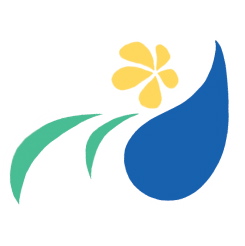I chose flowers with autumn colours--orange spray mums and alstroemeria plus some pink mums to add a splash of light colour!
The dried branches were ones I picked some time last winter!
SInce there was no need to put the branches in water, I used the space outside of the container. By placing the branches next to the thick body of the metal container, I showed a light vs heavy contrast.
Here is the whole arrangement.
I hope you like it. --Miyako
Photos by the ikebana shop. All rights reserved.




